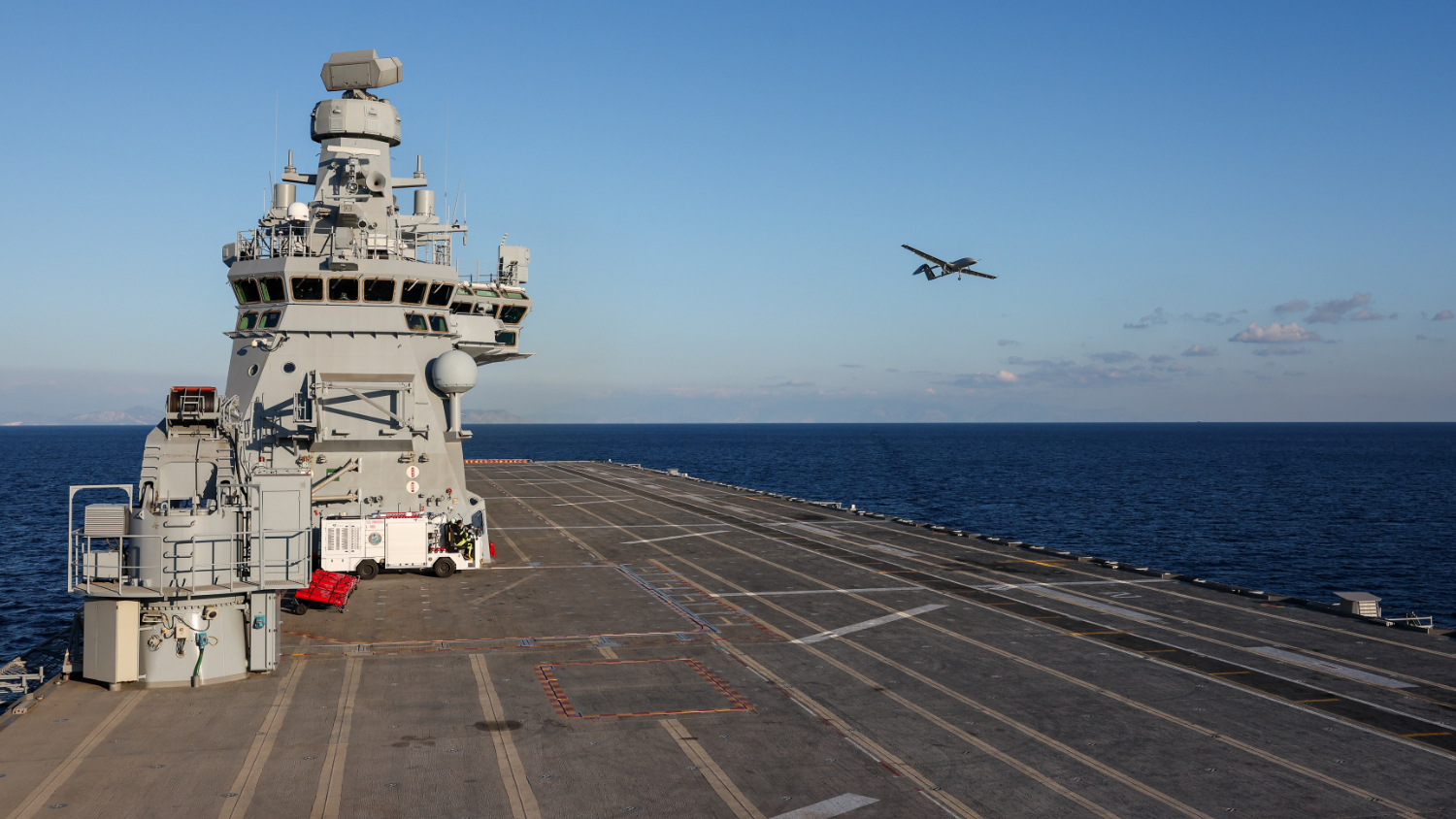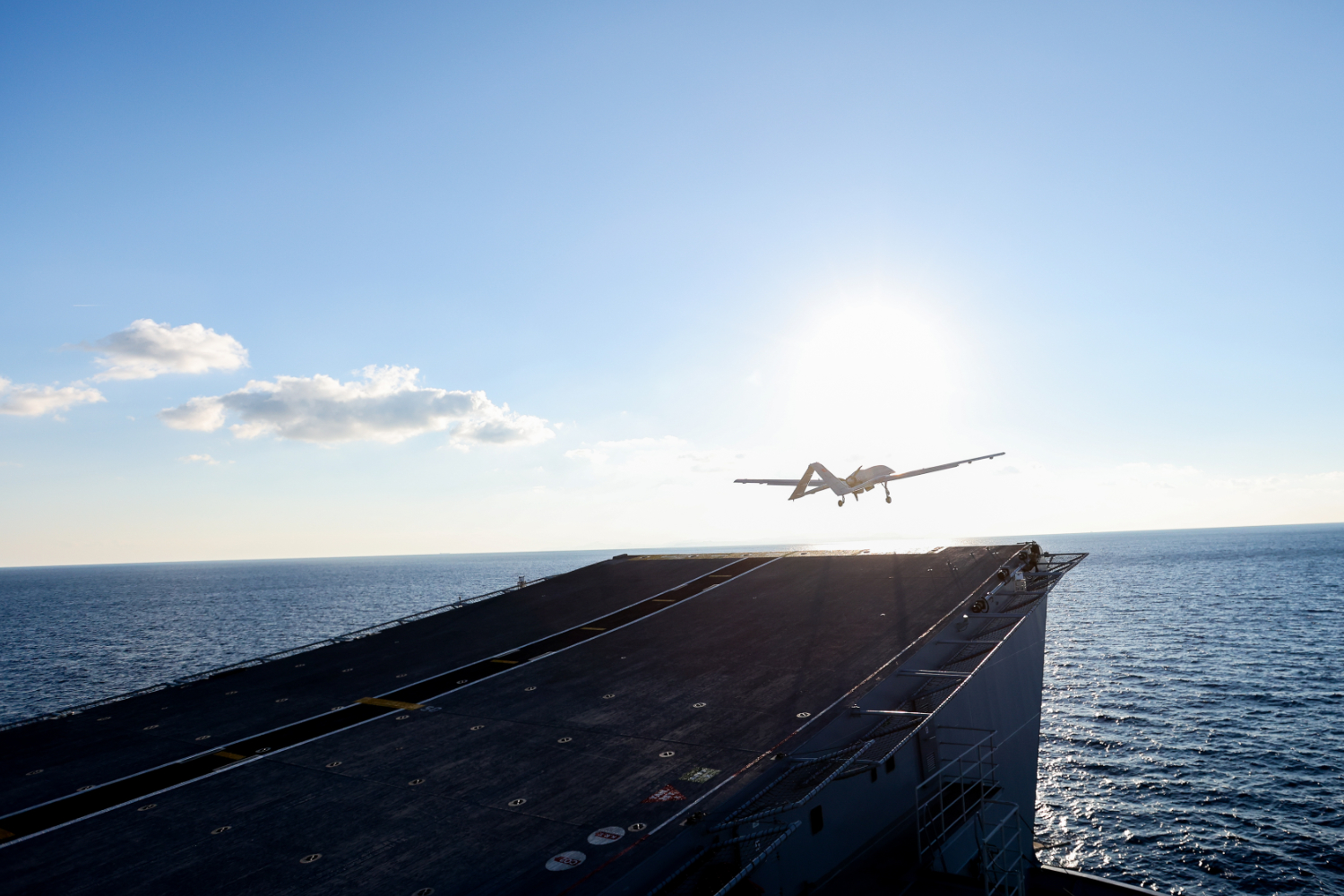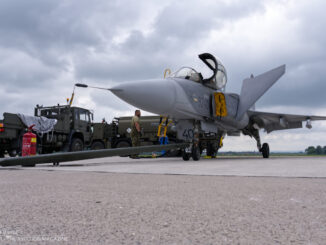 On 19th November 2024, Bayraktar TB3 unmanned combat aerial vehicle (UCAV) completed its open-sea shipboard testing programme, according to statement released by the Baykar company, manufacturer of the aircraft. Within the test, the Turkish UCAV made the aviation history by the first take-off and landing of the unmanned vehicle from a short-runway vessel.
On 19th November 2024, Bayraktar TB3 unmanned combat aerial vehicle (UCAV) completed its open-sea shipboard testing programme, according to statement released by the Baykar company, manufacturer of the aircraft. Within the test, the Turkish UCAV made the aviation history by the first take-off and landing of the unmanned vehicle from a short-runway vessel.
According to press release issued by Baykar Technology, two prototypes of the aircraft – designated PT1 and PT2, respectively – took part in the testing programme.
Initially, both UCAVs were deployed from Baykar’s Flight Training and Test Center in Keşan, Edirne, to Dalaman Air Base Command. Then, the Bayraktar TB3 PT1 made a series of day and night close-range flights to TCG Anadolu, an amphibious assault ship of the Turkish Navy. That so-called ´Approach test´ was concluded successfully, without any issues.
The next phase began with an open-sea shipboard tests of the Bayraktar TB3 PT2. Then, the aircraft took-off from the short runway of TGC Anadolu, using her 12-degree inclined ramp. After a 46-minute-long test flight performed over the Aegean and Mediterranean Seas, the UCAV successfully returned to the Turkish ship and landed on the same short runway, without using any landing support equipment.
Therefore, the successful Turkish UCAV operation from an aircraft carrier set a new milestone in both aviation and maritime history.
It should be mentioned here that the first UCAV open-sea landing and take-off operations were successfully performed back in 2013 by Northrop Grumman X-47B, on board of the USS Geroge H.W. Bush (CVN-77). However, both were made with use of additional support – the X-47B performed an arrested landing and then was launched off the ship using catapult of the carrier. Not to be overlooked is the size of both vessels – the US aircraft carrier is one of the largest warships in the world, with overall length of almost 333 metres and with a displacement of 102,000 long tons; while the Turkish assault ship is almost one hundred metres shorter, and her displacement is only 24,660 tons in aircraft carrier configuration. Last but not least, the X-47B is only a technology demonstrator while the TB3 is expected to become operational in 2025.

In Addition, the Baykar company informed that during the UCAV test flight programme concluded at the company´s Flight Training and Test Center, a series of high-altitude system performance tests were performed. During the evaluation flights, the TB3 reached an altitude of 36,310 feet (11,067 metres), while Bayraktar AKINCI – a high-altitude long-endurance (HALE) UCAV developed by the company – set the new Turkish altitude record at 45,118 feet (13,752 metres).
Since the start of the flight test programme, the TB3 UCAV clocked 823 flight hours. Including the endurance test from December of 2023, during which the new Bayraktar aircraft stayed in the air for 32 hours and covered a distance of 5,700 kilometres.
The Baykar Bayraktar TB3 is the new Turkish carrier-based, medium-altitude long-endurance (MALE) UCAV, with the short take-off and landing (STOL) capability. The TB3 is powered by domestically developed TEI PD-170 engine and is equipped with six hardpoints for smart and precision-guided ammunition. The aircraft performed its maiden flight on 27th October 2023 and is expected to be introduced into the Turkish armed forced in 2025.
TCG Anadolu (L-400) is the amphibious assault ship launched in 2019 and derivates from the Spanish Juan Carlos I-class. The vessel was officially commissioned on 10th April 2023 and can operate as the assault ship or the V/STOL aircraft carrier. In addition, she is a flagship and command centre of the Turkish Navy.
The vessel is also ready to carry up to ten F-35B Lighting II 5th generation fighters. Nevertheless, Turkish orders for that type of aircraft – twenty examples of the F-35A already ordered with option for up to 100 aircraft – were cancelled by the American authorities in 2020, for political reasons.

All photos © Baykar Technology. Information from press releases of the Baykar company were used.



